Wet white marble shower floor turned gray!
During my bathroom remodel, I had Green Ming Basket Weave mosaic marble installed on shower floor. The pan was properly installed w/Portland cement, cured for a few weeks before mastic & tile was layed down. The white marble looked beautiful for weeks. I believe it may be thassos marble. After the plumber turned the water on, the tile darkened to a soft gray. After weeks, the outer areas of the floor returned to white color but the center area is still gray. I used a heat gun on a few tiles, they turned white but the next day they were gray. Could this be a moisture problem? We have tried blowing a space heater over the floor for 2 days, but no change. Has anyone had a similar problem? Thanks.
Comments (48)
threeapples
10 years agoI had/have the identical problem with our carrera mosaic shower floor. :( my tile setter blames the sealer and I blame the tile setter who can't articulate how he constructed the shower. It's being ripped out (at our expense). We tried everything to dry it out and after months it has not changed. So sorry to hear this has happened to you as well.
catbuilder
10 years agolast modified: 9 years agoFind out EXACTLY how this shower was constructed. How do you know the pan was properly installed? (Just because they say so, doesn't make it true) What do you mean it was installed with portland cement? Did they REALLY use mastic? How was the shower waterproofed?
Related Professionals
Clute Kitchen & Bathroom Designers · Fort Myers Kitchen & Bathroom Remodelers · Rancho Palos Verdes Kitchen & Bathroom Remodelers · York Kitchen & Bathroom Remodelers · Richmond Glass & Shower Door Dealers · Barstow Heights Glass & Shower Door Dealers · Victorville Glass & Shower Door Dealers · Dublin Glass & Shower Door Dealers · Eureka Cabinets & Cabinetry · Lakeside Cabinets & Cabinetry · Stoughton Cabinets & Cabinetry · Ridgewood Window Treatments · San Rafael Window Treatments · Stony Brook Window Treatments · Taylor Window TreatmentsMongoCT
10 years agolast modified: 9 years agoCatbuilder is correct.
"Portland cement" can be different things regarding semantics. But if they actually used a no-kidding honest-to-goodness STANDARD portland cement mixture, it's the wrong thing for a shower pan. It should have been "dry pack" or "deck mud", which is a sand-cement mixture with much more sand than cement, and very little water.
The difference between the two is that deck mud will allow water to drain or percolate through it.
If they used a no-kidding "mastic", again, that's the wrong product. Mastics can absorb water, hold water, and re-emulsify (soften) when exposed to standing water. And a shower floor will see standing water. A cement-based thinset should have been used to set the marble on the floor.
Again, it could be semantics at play. Some people erroneously swap "mastic" for "thinset". If your floor tile was adhered with something that came out of a re-sealable plastic bucket, it was "mastic" and it was the wrong product. If it came in dry powdered form and they mixed it up on site, then it was "thinset". Again, thinset should have been used.
Lastly, "the pan was properly installed". You already wrote that "The pan was properly installed w/Portland cement...". You didn't mention a topical membrane, so I'm supposing they used a CPE or CPVC membrane buried in deck mud?
Let's assume they used proper deck mud instead or portland cement. What they should have done is install a sloped layer of deck mud, with the slope going to the drain. Then install the waterproof membrane over the sloped deck mud. That way the membrane is sloped to the drain, and that is required by code. Then on top of the membrane, they install another layer of deck mud, that layer follows the slope of the membrane. Then the tile goes on top of that layer of mud.
If they installed the membrane flat on the subfloor and then installed a sloped layer of deck mud on top of the flat membrane, and then tiled? That's wrong, because you have a flat membrane.
A non-sloped membrane flat on the floor can hold water underneath the tile.
teruko
Original Author10 years agolast modified: 9 years agoThree Apples- I'm so sorry you have the same problem. Our tile supplier is willing to replace the tile for free but I need to make sure it's not faulty tile.
Mongoct & Catbuilder - I will forward all your questions concerning the tile prep to my GC. We are not living in the house during remodel so I wasn't able to observe the applications but was assured their tile layer uses correct procedure for laying shower floor tile.
Tell me aint so, Mngoct, that if somewhere in the process an incorrect underlayment was used, the GC may have to pull everything out & start from scratch?
teruko
Original Author10 years agolast modified: 9 years agoMongoct- here is copied response from our tiler:
"I used dry pack. Thinset(no mastic) and hydro ban. Did pre slope. Water proofed, then pan. Then tile with thin set. I have no idea what could be going on"
When we first noticed graying, we flushed the entire shower floor. It all turned gray but next day the outer perimeter whitened probably due to a steeper slope. Also, I soaked a surplus sheet of this tile overnight, & it never grayed. Go figure...
threeapples
10 years agoTerzen, we did the identical thing with a surplus sheet and ours didnt gray either. :(
Did you have this tile sealed?
I'm pretty close to getting a synthetic for our shower floor because I don't want to risk going through this again.
teruko
Original Author10 years agolast modified: 9 years agoThreeapples- The shower floor hasn't been sealed yet as the plumber needs to return. Hmm, if your surplus tile didn't gray after soaking sounds like we both have the problem of what is going on underneath our tile. I'm checking now to see what color thinset our tiler used. If all the tile grayed & remained that way, I could live with it, but the partial graying makes my floor look dirty. We used Carrara in another bathroom & it's fine. Good luck on your synthetic floor; sounds like a good plan!
teruko
Original Author10 years agolast modified: 9 years agoMongoct - Our GC removed the drain cover, tiles & drain pack to see if weep holes were clear (which they were). Underneath the tile was wet & the dry pack layer was dry. The water must have gone through tile & grout (it was never sealed). My question to you is are you recommending a membrane between the two layers of deck mud & then another topical membrane directly under the tile? DH doesn't think the topical membrane would help since we need to find out why the moisture under the tile in center of shower did not evaporate after 3 weeks.
MongoCT
10 years agolast modified: 9 years ago"My question to you is are you recommending a membrane between the two layers of deck mud & then another topical membrane directly under the tile?"
No, my previous wording was probably a bit vague.
What I recommend is really a method that I consider to be a "best practice" for showers, especially those with natural stone. Starting with a flat subfloor, after proper prep you put a sloped later of deck mud on the subfloor with a flanged drain set flush into the deck mud.
Then on top of the sloped mud you put a topical membrane; Hydroban, Kerdi, for example. Those at the two systems that have flanged drains.
Then you tile directly on the membrane.
The thing I like about the flanged drain is that when compared to a clamping drain, the physical structure of the clamping drain creates a small 1/4" high dam where the membrane is clamped by the drain's ring.
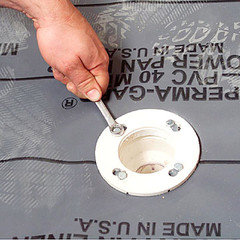
That 1/4" obstruction shouldn't restrict drainage, because the weep holes should allow any moisture that hits the flange to flow through the several sets of weep holes built into the drain. In the above photo, you can see the weep holes to the left and right of the 6 o'clock position on the flange. There's another set in the bolt holes.
The clamping drain system should work fine. But sometimes it doesn't. And sometimes there is no logical or apparent reason why it doesn't give optimal performance.
Compare that to a flanged drain, where the slope of the membrane is smooth from wall to drain pipe itself. There are no vertical obstructions.
I have to consider myself fortunate that I've never had "wet ring" moisture issues like you, stacy, and threeapples, even when using clamping drains.
One other comment. I hadn't seen this thread for a while and I just noticed your tiler's response to you:
"I used dry pack. Thinset(no mastic) and hydro ban. Did pre slope. Water proofed, then pan. Then tile with thin set. I have no idea what could be going on"
The part that confuses me is the "Did pre slope. Waterproofed, then pan."
I don't understand the "...then pan" part that follows "Waterproofed...". Is it supposed to be "Waterproofed the pan."? That would make sense.
With Hydroban, you do a sloped layer of deck mud. Then hydroban over that deck mud. No "pan" goes over that waterproofing. You tile right on the Hydroban.
I don't know what kind of drain he used. If he used the Laticrete flanged drain (which is designed to work with Hydroban) your GC shouldn't have been able to get to any "drain pack", here are the layers he would have found during his excavation:

If your tiler used a clamping drain with Hydroban, which he probably did since your GC was able to remove some tile and "dig through some mud to see weep holes", then he probably did it using the "divot method".
You do a mud preslope, then carve out a bowl or "divot" around the clamping drain.

Then hydroban the sloped mud, the divot, and the drain flange:

Then install the top part of the clamping drain over the base flange:
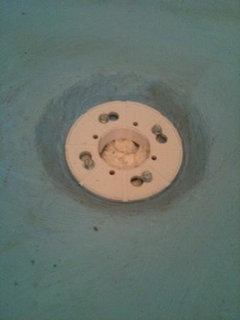
Then thread the drain grate assembly into the drain base.

Add a small handful of pea stone (or other "debris") over the weep holes so mud doesn't pack into the weepholes and clog them. Then fill over the pea stone to fill the divot with mud, then tile:

Sorry I can't be of more help, but it's time for me to run. Hopefully you can get things figured out.
teruko
Original Author10 years agolast modified: 9 years agoMogoct - I think tiler meant "waterproofed the pan." DH says according to your instructions & photos, our tiler did everything correctly. He thinks our marble is too porous & creates pathway for water to sit underneath it with no place to go. I'm afraid threapples is right & I will have to pick out another tile. I'll let you know how this is resolve.
Lastly, thank you for taking so much time (to include photos) in giving me such an informative response! I'm always humbled by Gardenweb members generosity & kindness in rallying round to help.
pricklypearcactus
10 years agolast modified: 9 years agoEven though I do not currently have a shower with this issue, thank you so much mongo for such a detailed and thorough explanation of waterproofing around the drains. It is really incredible to have someone with your knowledge patiently share that information with those of us outside of the industry. Thank you.
MongoCT
10 years agolast modified: 9 years agoSome marbles can be like that. The global economy has been good and bad. There's so much more product out there, but some of it can come up short performance-wise.
You wrote that your marble didn't discolor when you soaked a sheet of it in water. That can happen sometimes. The tile by itself won't really absorb moisture. But once it's bonded to thinset, the thinset sort of wicks water over.
About the only other thing I'll write is that when using marble I'll use white thinset instead of gray. Some marbles can be a bit translucent and the white just performs better with a white stone like marble.
I do hope you get this resolved. Weird things sometimes happen.
I'm glad the photos and descriptions have helped.
Best to all.
threeapples
10 years agoTerzen, we are having another tile setter come and give us an opinion about our shower. I'm hoping to start demolition of its floor soon after and will take photos every step during "Excavation" in order to learn (hopefully) what went wrong and how to help lessen the chance of error the second time around. I'll post all we learn and our photos in case it might be of use to you or others here. I am really looking forward to showering in our own shower in this house already!!!!
teruko
Original Author10 years agolast modified: 9 years agoThreeapples - It will be interesting to see what you discover during your "excavation." I look forward to the photos & the final reveal. Good luck!
Got a good chuckle from mongoct's last reply. There was a World Series? There is life after a remodel? Can't wait to move back home & take my first shower, too!
Stoneshine
10 years agolast modified: 9 years agoI see these issues with mosaic or basket weave too often.
But also there are many installs that it never occurs.
Seems to be a gamble on results. In all the cases I have seen it is the moisture from under the stone that is causing the problems. Its possible the moisture is coming in from so many grout lines and change of plane joints that haven't been caulked properly. Sealing stone in the shower stall is an issue as well. I think if the top of the stone has sealer applied it can make these issues worse.
I know everyone says you must seal your shower stall.
The sealer is breathable to some extent but will slow down vapor transmission or the evaporation of moisture under the stone. The only performance of an impregnating sealer is to temporarily inhibit staining.
What can stain stone in a shower stall.
Like mongoct said its all about the installation and specifying the correct product(s).
We also see from time to time white marbles that have turned yellow in wet enviroments. Something consumers should be aware that white marbles can have an iron content in their mineral composition . They are capable of rusting from prolonged exposure to moisture. Again something a sealer cannot prevent. Thank you mongoct for a great explanation of pan construction and the pics!winesnobs
9 years agolast modified: 9 years agoI just started an install of White Carrara 3 x 6" marble for my kitchen backsplash in a subway tile set. I have experienced the same problem - once tiles began to absorb the moisture from the thinset, they have changed color. Any grey veining has turned really dark grey and some of the white tiles are now this awful yellow. I have been reading several blogs and realize it is likely due to iron oxide or pyrite mineral within the tiles. My wish was for a beautiful WHITE with subtle grey veining and cherry-picked each tile to obtain that. However, now I am ready to tear out what has been set. I'm considering changing to a ceramic tile to avoid this hassle. Any ideas from anyone?
DreamingoftheUP
9 years agolast modified: 9 years agoI'm considering changing to a ceramic tile to avoid this hassle.
This.
Bunny
9 years agolast modified: 9 years agoWhat a shame that the thinset changed the color of the marble tiles. Why don't we hear about this more, given the popularity of marble tile backsplashes?
Could they be sealed first, the way people seal crackle tile to prevent grout migration into the crackles?
Cabot & Rowe
9 years agolast modified: 9 years agoNo,
The grey portland ceement crystals will still grow into the marble and darken it.
Sealant isn't armour. It simply gives you more time to clean the tile and grout.
frankietor
8 years agoMy nightmare is about the pebbles in my shower floor that turned from a beautiful white to match my marble, into a very ugly light brown. Like painted with coffee.
I definitely don't want to replace it right now, I prefer to paint it if is there any product I could use to this purpose.
The home improvement store gave all kind of excuses, and blamed me for not sealing it before installation, but the transformation is horrible.
If any of you knew of some kind of paint I could use, I definitely paint it in white, and keep going with the ton of work that means full renovation of a 1948 home.
Thanks in advance
winesnobs
8 years agoUnfortunately, I don't have any suggestions for frankietor. But, I wanted to follow up from my earlier comment last June. Although my backsplash 3" x 6" Carrara Marble tiles turned really dark and off color when they were wet from the thinset, within a week or so they began to dry (cure). I almost gave up early on, but I'm glad I didn't. A year later, they are beautiful and I'm thrilled that I took the extra effort to cherry-pick the tiles to achieve just the beautiful result I had hoped for.
By Any Design Ltd.
8 years agoResearching Marble options for your shower. This one discussion alone should be cause for alarm. If your on the fence have a look at this article discussion the subject in length.
[WHY MARBLE MIGHT BE WRONG FOR YOUR BATHROOM[(https://www.houzz.com/magazine/why-marble-might-be-wrong-for-your-bathroom-stsetivw-vs~12133357)gaminola
8 years agoMy honed marble 3x6 backsplash turned gray after grouting with platinum grout color. Has anyone experienced this same issue? The tiles were not sealed prior to grouting.
Cabot & Rowe
8 years agoThis is a common mistake. Natural stones should be sealed prior to grouting unless you want the color change.
winesnobs
8 years agoGaminola,
Although you didn't seal your marble backsplash prior to grouting, you may find that it will lighten some after fully drying. Please reply to let us know of your experience.
gaminola
8 years agoHi Winesnobs,
I read you had a similar experience with your backsplash. What color grout did you use? How long did you wait to seal both grout and marble? Do you mind sharing pictures? It's been two days since it was grouted. Here are some pictures. I hope it does lighten once it cures. I read that it can take 2 to 3 weeks.

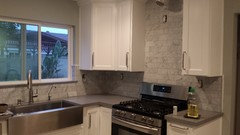
Beth Kent
8 years agoVery interesting thread. I was searching cause I have darkened tile on my bathroom floor... the common basket weave style from Lowes. They were great for about a year. Then we had leaking from under the shower door and the ones directly in front of the shower darkened and some turned yellow. Great info above but now what do I do? We haven't showered there in around a month. (Yes, we have another shower!! haha) but it hasn't changed. If I don't mind it should we go back to using it? If I wipe up the water is it ok to just live with? I really can't afford to rip it up right now. Is it doing damage to the concrete board that I'm pretty sure was the underlayment? Thanks.
Cabot & Rowe
8 years agoBeth, Take some pics and start a thread on the John Bridge Tile Forum. You'll get accurate speedy answers. Fine folks there.
winesnobs
8 years agoHi Gaminola,
I expect you'll find the grey will lighten after a few weeks of drying/curing time. I used white grout because my overall kitchen design is all white stone surfaces with taupe (Seadrift) cabinets and a darker ash grey/brown hardwood floor. We sealed our backsplash tiles after grouting although I read above that it is recommended to seal prior. It's been over a year and we have not had any problems and love the finished look.
mom2206
8 years agoI'm having the same problem with my backsplash marble tiles, and it has been over two weeks since installation. (Actually, we had to tear out a portion of it due to yellow staining from behind the wall, and this is the portion that hasn't cured.) I'm wondering if I should try to speed up the curing with a warming lamp or hair dryer. Any suggestions?
winesnobs
8 years agoIs this in your kitchen, and what is behind the tile? What product did you use for either mortar or mastic adhesive? White carrara marble contains an iron in it that appears yellow when wet, the discoloring can be quite prominent in my experience. The yellow staining that you're seeing is likely on a tile that has some yellow shades in it (the iron). In my experience and research, that will not go away. I "cherry-picked" tiles that were void of any yellow tones to avoid this problem, and so far so good.
In another application in a bathroom, I experienced some yellow staining and believe it was caused from similar issues. But, a mastic adhesive had been used on the front edge against wood only. It is likely the wood and/or iron leached through due to the porous nature of the marble.
crfts4me
8 years agoI just had 3x6 Carreras marble installed on my backsplash and was dismayed to see the change in color. Luckily for me the color will work for me but I am glad to hear that the color will most likely lighten in the future.
Jeff Goforth
7 years agoFirst of all , please understand the use of ANY natural stone installed in your home. Stone is porous and absorbent. In dry areas such as a kitchen backsplash, the tile can look dark in spots and usually will lighten back up as the moisture in the setting material (mortar) cures. This can take days to a few weeks. Now on shower floors or any "wet" areas, Shower floors have 2 drainage systems. The first being the flood drain you see when showering. This is the water that flows on top of the tile down into the drain. The second type of drain is your weeping drain. This is the water that gets beneath the tile and between the waterproofing liner used. This water has to "wick" to the weep holes in the drain, this is the slow drain. Every shower does this, in most you do not know it is even happening. If water was not supposed to get beneath the tile, you would not need a liner underneath. Natural stone, even when sealed properly, does NOT prevent water from getting beneath the tile as porcelain doesn't either. It is not supposed to. What you see is the water wicking up into the back side of the stone and getting trapped beneath the sealer. (Picture a wet cloth in a ziplock bag) As the water tries to evaporate, it follows the path of least resistance, thus spreading out into the body of the stone causing it to look darker or "wet". Yes this will dry over time, however with continued use, this will always be there in wet areas. This is one of the major issues when using natural stone in a shower. It is what it is as they say. If you are not comfortable with this, in future selections, porcelain tile is impervious to that wicking as it does not absorb water either from the top or bottom.... Now the second issue. ALL natural stone contains minerals in it as it comes from earth. Any marble, slate, travertine or any natural stone in a wet area can oxidize! Meaning it can turn greenish, yellowish or even "rust". As the water tries to evaporate, it brings the soluble minerals with it leaving them on or just under the surface of the stone. As these minerals hit the oxygen in the air and / or eventually the oxygen in the water, it then oxidizes causing the discoloration. Picture leaving an iron pan in water over night, then the next day you have rust on it. In these situations, everyone blames everyone else. At the end of the day, homeowners should do their research and educate themselves before making this type of investment as anything natural can be more delicate to care for. Cleaners can also eat away at your stone and cause it to crumble or etch. Picture vinegar and chalk, If you select any stone, make sure you understand these issues. Some houses have more of an issue than others. There is no rhyme or reason to it. If you still stay with stone, make sure you take proper care of it and use the proper cleaners. Understand the possible issues. After all you would not throw your best suite in the washing machine and pour in bleach!.......JKGCRB
Phyllis Ramsey
6 years agoWinesnobs Do you have photos of your white carrara backsplash? I am trying not to panic, but my beautiful handpicked white tiles have turned gray after installation! I have white quartz countertops and white csbinets.
winesnobs
6 years agoI would tell you not to worry. My white carrara marble tiles turned really grey immediately after setting them with a mortar for marble. But, as the mortar dried the tiles also dried and became white again. I also panicked and actually stopped my tilework thinking that if I needed to remove them and opt for something different, I didn't want to have more set. Did you use a mortar or mastic adhesive? After a few weeks, the tile looked amazing. I love my backsplash and it's been about 3.5 years since they were complete. I hope this puts your mind at ease.
Phyllis Ramsey
6 years agoThank you so much winesnobs! I am trying to wait patiently, but the change is dramatic! I have also stopped the installation halfway through! It's a mess! The tile guy insists that he used white thinset. I am going to wait for one week before making any changes, but I am considering ripping it out. :(
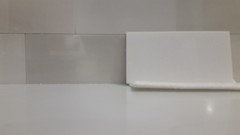 I am hoping that I will have good results like you have!
I am hoping that I will have good results like you have!
winesnobs
6 years agoHi Phyllis,
Glad to comment on this. My tiles looked like this too - any tiles that were pure white stayed white, while any with even a bit of grey veining went really dark. That contrast while wet made me REALLY nervous. But after some time, they all looked beautiful again. One further comment - I hand picked each and every tile hoping for a beautiful installation. It sounds like you may have taken that extra effort too. I would do what you are doing - just watch each day and I expect you'll find the tiles getting lighter and lighter. Once your fears have calmed, just start in again and you'll be rewarded with a wonderful backsplash!!
Stockett Tile & Granite Company
6 years agoMarble is porous, some more than others. Try to avoid the "sugary" types. The water is penetrating the stone itself. It's most likely NOT an improper installation of shower pan.
Star Tile & Stone, LLC
3 years agoHello,
Bellow is the link to my recent article that summarizes the research we have done on the subject of marble moisture discoloration in shower floors:
https://www.houzz.com/discussions/5956434/marble-moisture-discoloration-don-t-blame-the-stone
Nancy in Mich
3 years agoStar Tile, I appreciate that you have information to share, but every time you post it at the bottom of an ancient thread, you pull it up to the top of the forum. You can continue to do this, of course, but there are so many old marble tile discoloration threads that you may be at it for weeks, meanwhile displacing current questions that deserve to be seen. Often, people who monitor the forum for places where their expertise is needed don’t go past the first page.
Star Tile & Stone, LLC
3 years ago@Nancy in Mich
These are the threads that are shown in the Google search for marble discoloration in showers and many people read it. My last comments were mostly for those people who try to find information about it.
Dragonfly Tile & Stone Works, Inc.
3 years agolast modified: 3 years ago@ Star Tile & Stone, LLC
Pavlo, I actually think you are right on by posting on ANY thread regarding the marble issue which you have expertly researched. The more places you can share this information, the better. As you know there is a great deal of misinformation out there, both in our industry and in the public in general. Keep sharing please and thanks for your leadership on this issue. Much Respect.
Star Tile & Stone, LLC
3 years ago@Dragonfly Tile & Stone Works, Inc.
Thank you for your understanding and support!
Nancy in Mich
3 years agoNotice that I did not ask you to stop posting. I simply wanted to make sure that you understood what happens when pulling up several old posts. It is fine for you to decide to continue. I meant no disrespect. Just information for you to consider.
Star Tile & Stone, LLC
3 years agoThat's exactly how I understood your comment and, of course, I didn't see any disrespect from you. I simply explained why I decided to post the link here. I have donated many and many days of my own time in the past 2 years for the above mentioned research and testing and would like to share my findings.
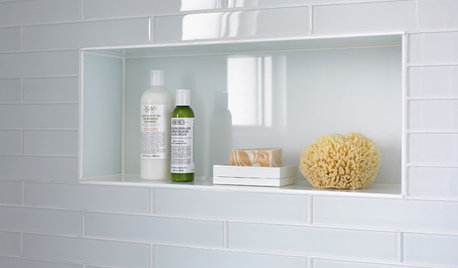

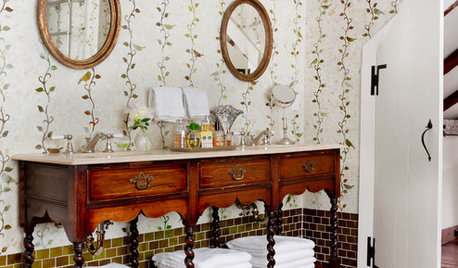
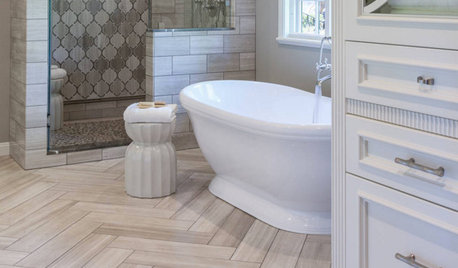
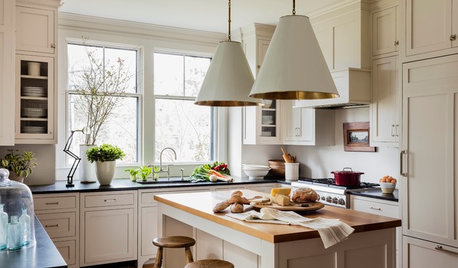
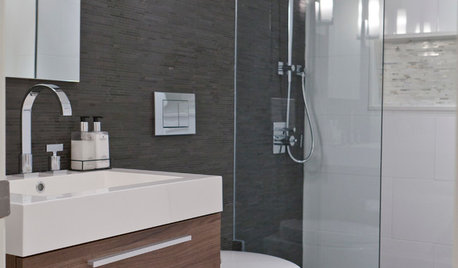

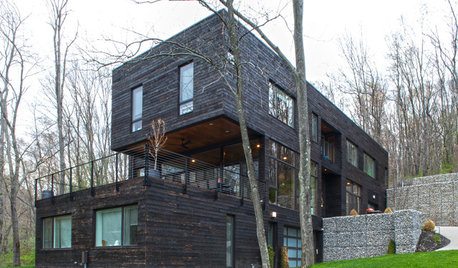








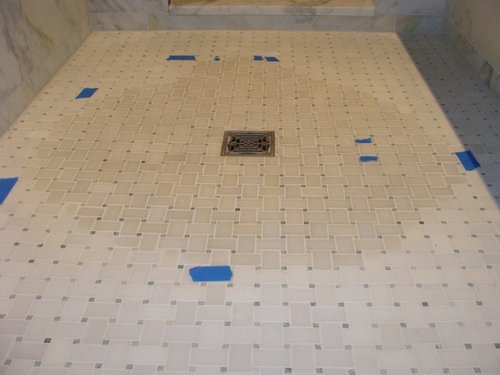
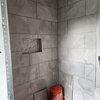

MongoCT